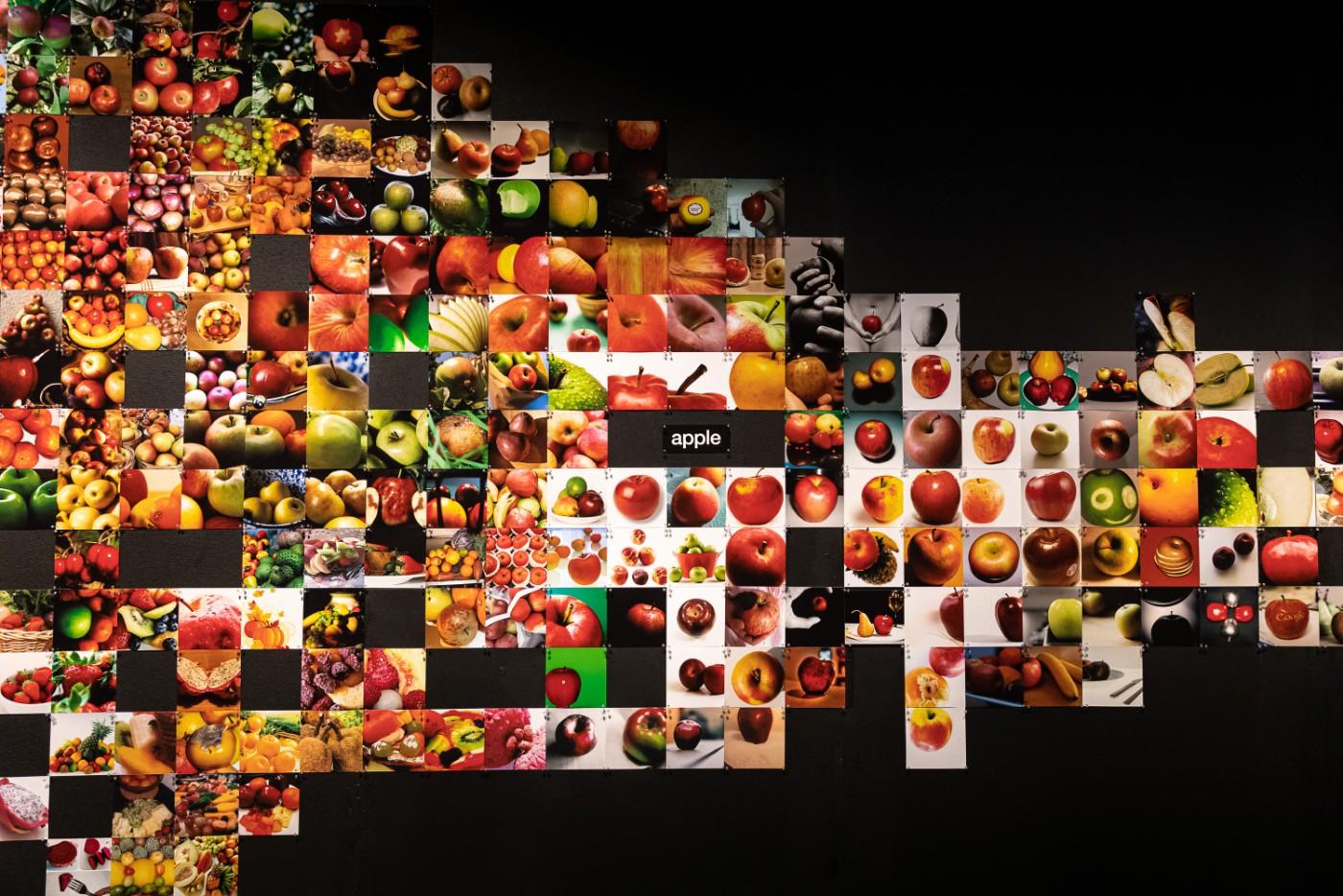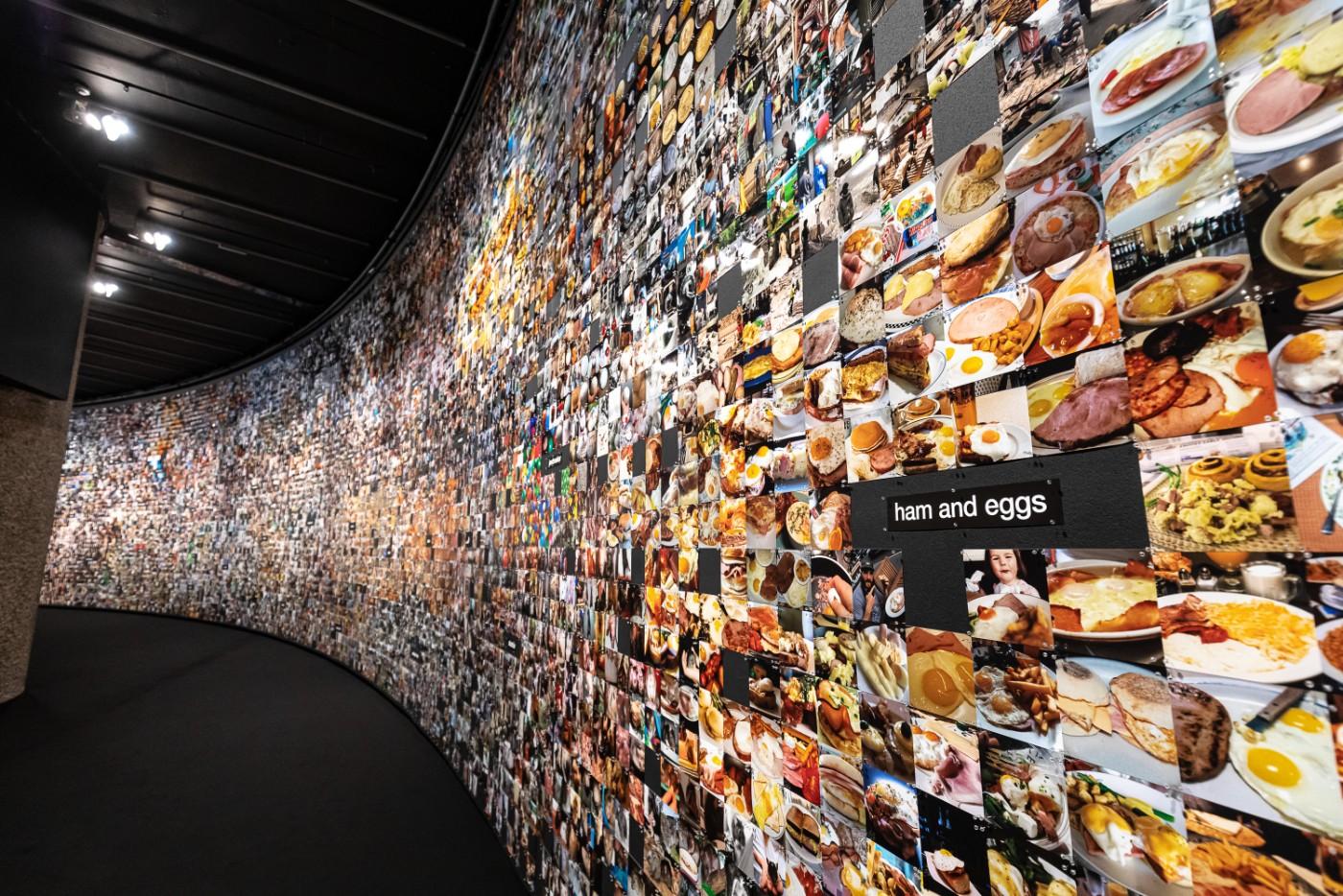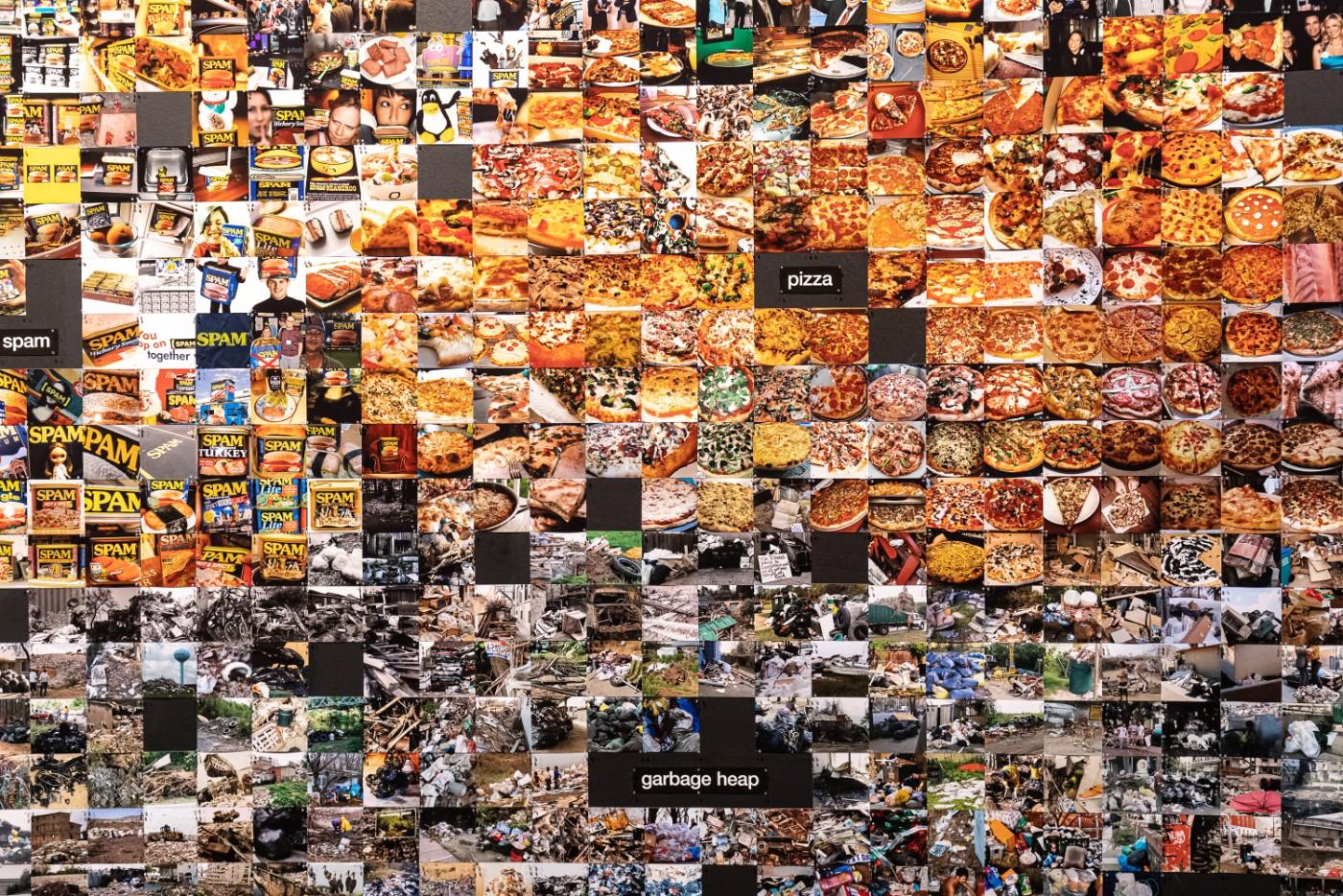Trevor Paglen said: 'Machine-seeing-for-machines is a ubiquitous phenomenon, encompassing everything from facial-recognition systems conducting automated biometric surveillance at airports to department stores intercepting customers’ mobile phone pings to create intricate maps of movements through the aisles. But all this seeing, all of these images, are essentially invisible to human eyes. These images aren’t meant for us; they’re meant to do things in the world; human eyes aren’t in the loop.'
For The Curve, Paglen has installed approximately 30,000 individually printed photographs pinned in a complex mosaic of images along the length of the curved wall. Taking as a starting point ImageNet: one of the most widely shared, publicly available collection of images, which is also used to train artificial intelligence networks, Paglen queries the content of images chosen for machine learning. ImageNet contains more than fourteen-million images organised into more than 21,000 categories or 'classes'. In most cases, the connotations of image categories and names are uncontroversial i.e. a 'strawberry' or 'orange'. Others are classified under 'debtors', 'alcoholics' and 'bad persons'. These definitions, if used in AI, suggest a world in which machines will be able to elicit different forms of judgement against humankind.
Jane Alison, Head of Visual Arts, Barbican, said: 'Trevor Paglen continues to probe the underbelly of our digital world, illuminating the powerful and often hidden forces at play in shaping our understanding of the world. I am therefore delighted that we have been able to commission him to undertake our 32nd commission for The Curve as part of a year that explores our relationship with technology.'































